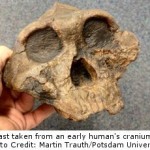
Nagoya, Japan – The economic importance of the world’s natural assets is now firmly on the political radar as a result of an international assessment showcasing the enormous economic value of forests, freshwater, soils and coral reefs, as well as the social and economic costs of their loss, was the conclusion of The Economics of Ecosystems and Biodiversity (TEEB) report launched today by TEEB study leader, Pavan Sukhdev.
“TEEB has documented not only the multi-trillion dollar importance to the global economy of the natural world, but the kinds of policy-shifts and smart market mechanisms that can embed fresh thinking in a world beset by a rising raft of multiple challenges. The good news is that many communities and countries are already seeing the potential of incorporating the value of nature into decision-making,” said Mr. Sukhdev, a banker who heads up the Green Economy Initiative of the United Nations Environment Programme (UNEP).
He was speaking at the launch of the two-year study, which has involved hundreds of experts from around the world, at the Convention on Biological Diversity’s 10th Conference of Parties meeting (CBD COP10) in Nagoya.
The TEEB study calls for wider recognition of nature’s contribution to human livelihoods, health, security, and culture by decision-makers at all levels (local to national and business to citizens). It promotes the demonstration, and where appropriate, the capture of the economic values of nature’s services through an array of policy instruments and mechanisms.
Countries such as India have already announced plans for implementing the economic valuation of their natural capital as well as the value of nature’s services in decision-making.
“TEEB’s approach can reset the economic compass and herald a new era in which the value of nature’s services is made visible and becomes an explicit part of policy and business decision-making. Do nothing, and not only do we lose trillions worth of current and future benefits to society, we also further impoverish the poor and put future generations at risk,” said Mr. Sukhdev.
“The time for ignoring biodiversity and persisting with conventional thinking regarding wealth creation and development is over. We must get on to the path towards a green economy,” he added.
Nature is Crucial to Prosperity and Development
In TEEB’s final report, “Mainstreaming the Economics of Nature”, there are three scenarios: a natural ecosystem (forests), a human settlement (city), and a business sector (mining), to illustrate how the economic concepts and tools described in TEEB can help equip society with the means to incorporate the values of nature into decision-making at all levels.
With more than half of the human population now living in urban areas, cities have a crucial role to play in acknowledging the natural capital required to maintain and improve the well-being of their residents. Innovative economic instruments and policies are emerging that reward good practice. For example, the Japanese city of Nagoya (host to the COP-10 meeting) has implemented a new system of tradeable development rights whereby developers wishing to exceed existing limits on high-rise buildings can offset their impacts by buying and conserving areas of Japan’s traditional agricultural landscape. Discounts on bank loans for buildings that receive a higher ‘star rating’ based on a green certification system designed by city authorities also create incentives for more green space within city projects.
An important finding of many studies reviewed by TEEB is the contribution of forests and other ecosystems to the livelihoods of poor rural households and, therefore, the significant potential for conservation efforts to contribute to poverty reduction. It has been estimated that ecosystem services and other non-marketed natural goods account for 47 to 89 per cent of the so-called ‘GDP of the Poor’ (i.e., the effective GDP or total sources of livelihoods of rural and forest-dwelling poor households) in some large developing countries.
“In the past only traditional sectors such as manufacturing, mining, retailing, construction and energy generation were uppermost in the minds of economic planners and ministers of finance, development and trade. TEEB has brought to the world’s attention that nature’s goods and services are equal, if not far more central, to the wealth of nations including the poor-a fact that will be increasingly the case on a planet of finite resources with a population set to rise to nine billion people by 2050,” said Achim Steiner, UN Under-Secretary General and UNEP Executive Director.
Failure to Account for the Value of Natural Capital Poses Significant Business and Social Risks
The report also drives home the message that failure of business to account for the value of natural capital, particularly in sectors such as mining, can pose significant business and social risks. The UK-based consultancy, TruCost, estimated that the negative impacts, or ‘environmental externalities’, of the world’s top 3,000 listed companies totals around US $ 2.2 trillion annually.
Approaches such as Net Positive Impact, wetland mitigation and bio-banking can help ensure that developers take responsibility for their environmental footprint. As consumers and governments opt for greener purchasing choices, the business sector also stands to make considerable gains: by 2020, the annual market size for certified agricultural products is expected to be US $ 210 billion; payments for water related ecosystem services US $ 6 billion; and voluntary biodiversity offsets in the region of US $ 100 million a year.
Countries Give Nature the Green Light
Countries are already taking steps to adopt the TEEB approach. India’s Minister for Environment and Forests, Mr. Jairam Ramesh, said today that the TEEB study provides practical guidance for new economic approaches that India will start to implement.














